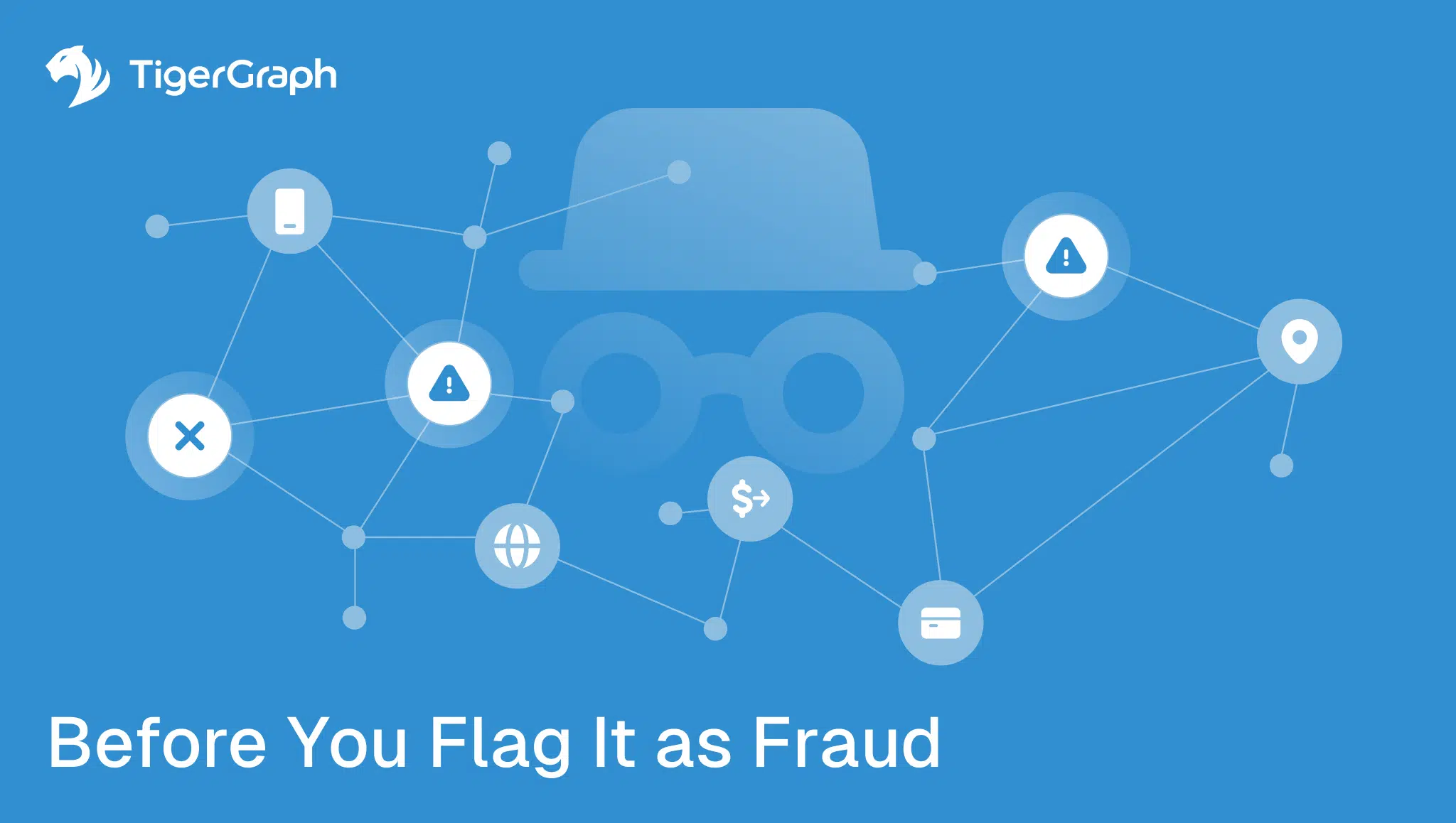Before You Flag It as Fraud, Know Who You’re Dealing With
Banks operate on trust, but that trust is under siege. Every new account or transaction could belong to a loyal customer, or to a fraudster exploiting blind spots. Knowing the difference has become the defining challenge for fraud prevention and compliance.
The reputational damage from getting this wrong is increasingly hard to recover from. This is especially true in an environment where customers expect frictionless digital experiences and regulators demand audit-ready precision.
The challenge is that fraud detection in banking and Know Your Customer (KYC) compliance depend on more than transactions or static attributes. They depend on context. Without accurate customer identity resolution in banking, institutions risk two extremes: frustrating legitimate customers with false positives or missing sophisticated fraud entirely.
That’s why entity resolution for fraud prevention is so important.
Most banks already use match scoring, with similarity checks, substitution rules like “Blvd for Boulevard,” and weighted factors across attributes such as names, DOB, and addresses. These methods help clean up typos and duplicates, and most banks are fairly good at this hygiene.
But match scoring still treats fields in isolation, which leaves blind spots. To truly know your customer in banking, institutions must move from scoring to connecting, using graph-powered identity resolution that maps relationships, lineage, and behavior across the enterprise.
Why Traditional Fraud Detection Falls Short
Legacy systems were designed to monitor anomalies in isolation:
- Rules flag transactions that exceed thresholds. Maybe it’s a large transfer, or from a foreign country.
- Identity verification in banking leans on attributes like SSN, phone number, or address.
- AML fraud detection applies similarity scores to catch typos, substitutions, or duplicate records.
These techniques help, but they miss the bigger picture. Even with advances in match scoring, critical context remains invisible:
- False positives. Legitimate customers with unusual patterns, like frequent travelers or families sharing devices, get flagged. Analysts waste hours on false alarms that damage customer relationships.
- Missed collusion. Fraud networks thrive on shared infrastructure: devices, IP addresses, merchants, shell companies. Field-level checks never surface these overlaps.
- Compliance gaps. Regulators want explainable evidence paths, not black-box scores. Without lineage, banks cannot prove why an alert was generated.
This results in investigators drowning in alerts, legitimate customers locked out, and fraudsters slipping through gaps that match scoring systems cannot close.
How Entity Resolution Strengthens Fraud Detection
Entity resolution in banking unifies fragmented records into a connected graph, consolidating duplicate profiles and linking customers to accounts, devices, merchants, and transactions.
Instead of debating whether “John Smith” and “Jon Smythe” look similar enough to be the same, a graph database entity resolution approach ties both records back to the same passport, device, or employer. Context, not string similarity, proves the match.
This shift powers fraud detection with identity graph capabilities that expose:
- Hidden mule networks, with dozens of accounts funneling payments through a single merchant or device.
- Synthetic identities creating different names or addresses, and sharing the same phone number or IP address.
- Shell structures that have overlapping ownership across jurisdictions, and signal money-laundering risks.
It’s important to note that graph-powered fraud prevention augments match scoring; it does not replace it.
Banks still need similarity and substitution scoring for hygiene. But when combined with graph relationships and behavioral linking, the institution gains visibility into fraud schemes that static scoring alone cannot reveal.
And because a graph-powered entity resolution model is inherently explainable, investigators can export clear evidence trails showing which nodes and edges triggered the alert. This satisfies auditors, strengthens board confidence, and builds trust with regulators.
Real-World Example: Fraud Network Analysis
A leading multinational bank struggled with false positives that overwhelmed analysts. Rules flagged anomalies, but investigators couldn’t see the networks behind them. By applying fraud network analysis with TigerGraph, the bank shifted from isolated rules to relationships.
Analysts could:
- Use entity resolution for AML and KYC to unify fragmented records into complete customer profiles.
- Apply graph centrality in fraud detection to pinpoint mule accounts sitting at the core of payment networks.
- Run PageRank fraud detection to prioritize high-influence nodes most likely to spread illicit activity.
The results were transformative:
- Cut false positives in half, while catching more true fraud.
- 300% faster investigations.
- More than $20M in annual fraud savings.
Instead of drowning in alerts, investigators zeroed in on the nodes that mattered most, exposing fraud rings in hours instead of weeks.
Why Contextual Identity Resolution Matters
Fraud isn’t random; it’s relational. To stop it, banks need contextual identity resolution that blends attributes, transactions, and behaviors into one connected view.
| Traditional Tools | Graph + Identity Resolution | |
|---|---|---|
| Detection | Transaction anomalies only. Systems catch large transfers or odd geographies but miss subtle coordination. | Entity resolution for fraud prevention connects customers, devices, and merchants to surface hidden collusion. |
| Identity | Field-level match scoring. Relies on names, DOB, and addresses that can be falsified or duplicated. | Customer identity resolution in banking ties records to shared infrastructure like IPs, devices, or employers. |
| False Positives | High. Analysts chase harmless anomalies, frustrating legitimate customers. | Reduced with context—behavioral linking separates real risk from unusual but valid activity. |
| Collusion | Invisible. Fraud rings sharing devices or merchants look unrelated. | Visible with fraud network analysis, where shared nodes expose mule hubs and shell companies. |
| Auditability | Black-box. Regulators see only a score with no explanation. | Explainable lineage regulators can follow, showing which paths triggered the alert. |
With this approach, fraud teams can show not just that an account was flagged, but why—whether it was device reuse, overlapping ownership, or proximity to a known mule hub. That transparency is exactly what regulators and boards now demand.
TigerGraph’s Advantage
TigerGraph operationalizes this at enterprise scale, turning pilots into production-ready systems:
- Performance: Handles millions of daily events with sub-millisecond multi-hop queries, enabling real-time fraud interdiction.
- Concurrency: Supports hundreds of analysts, investigators, and ML models querying simultaneously without bottlenecks.
- Feature factory: Continuously generates graph-native features—fan-in/fan-out patterns, community membership, and entity centrality banking scores—streamed directly into fraud models for higher recall and precision.
- Audit-ready lineage: Produces regulator-ready trails showing exactly why alerts were triggered, down to the device, IP, or beneficial owner.
This makes fraud detection with identity graph practical for Tier 1 banks operating at global scale, not just for controlled pilots.
Recommendations for Fraud Leaders
- Integrate fraud and identity. Don’t treat fraud detection and customer identity resolution in banking as separate workflows.
- Prioritize explainability. Regulators expect evidence trails, not opaque similarity scores.
- Adopt behavioral linking to surface collusion patterns invisible in flat data. Dynamic identity resolution does this by connecting behavior over time.
- Invest in scalability, with tools that handle millions of daily events with consistent performance.
Fraud detection in banking is about knowing who you’re dealing with. Graph-powered entity resolution for AML and fraud detection enables banks to unify identities, reveal hidden networks, and satisfy regulators with explainable lineage.
With TigerGraph, financial institutions achieve fewer false positives, faster investigations, and measurable ROI.
Fraud is the transactions, people, devices, merchants, and money in motion. To stop it, you need context. And context comes from graph-powered fraud prevention.
Ready to see how this works in practice? Explore TigerGraph Cloud or reach out to our team to discuss how leading banks are achieving millions in fraud savings with enterprise-scale graph analytics.

